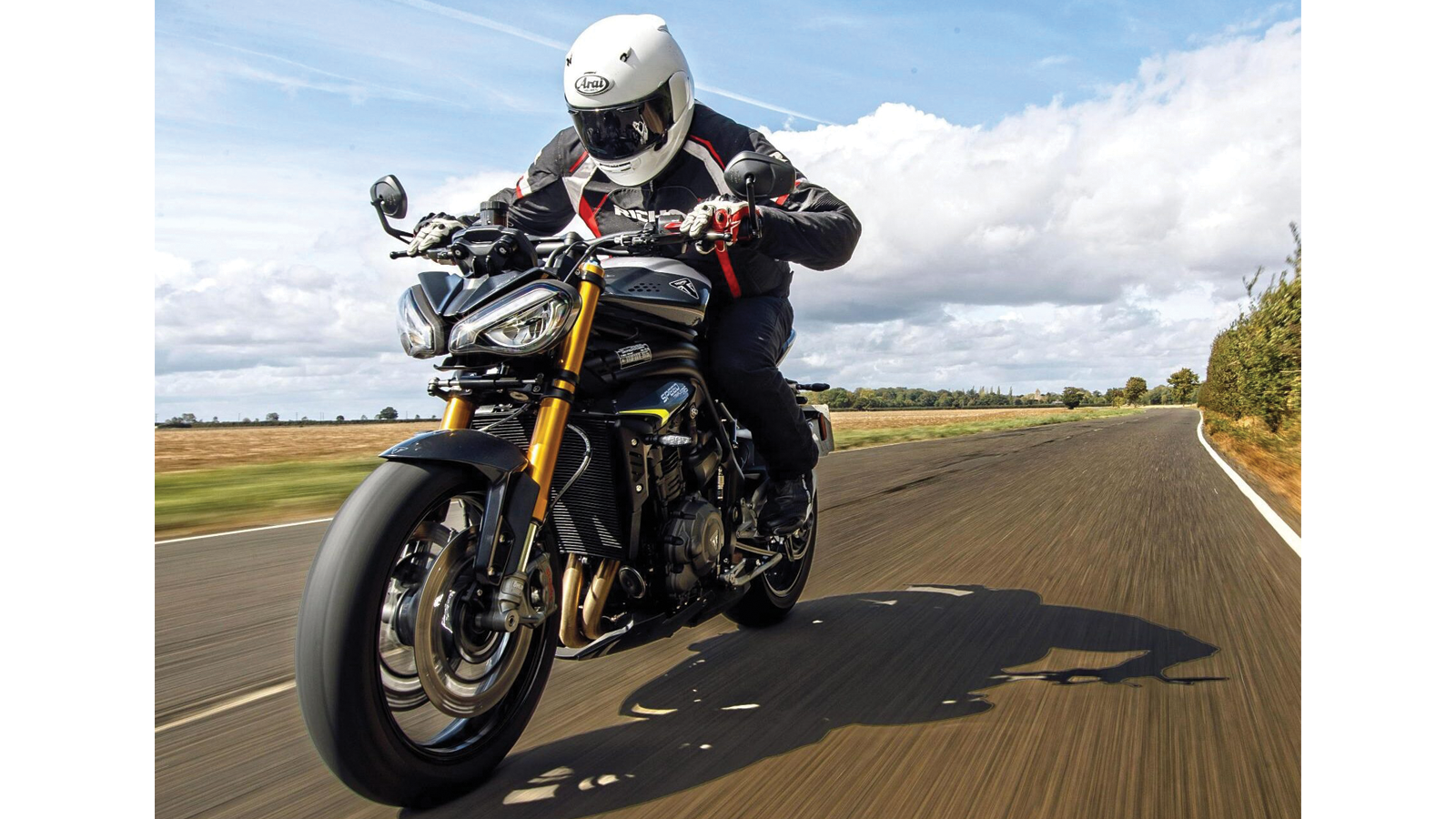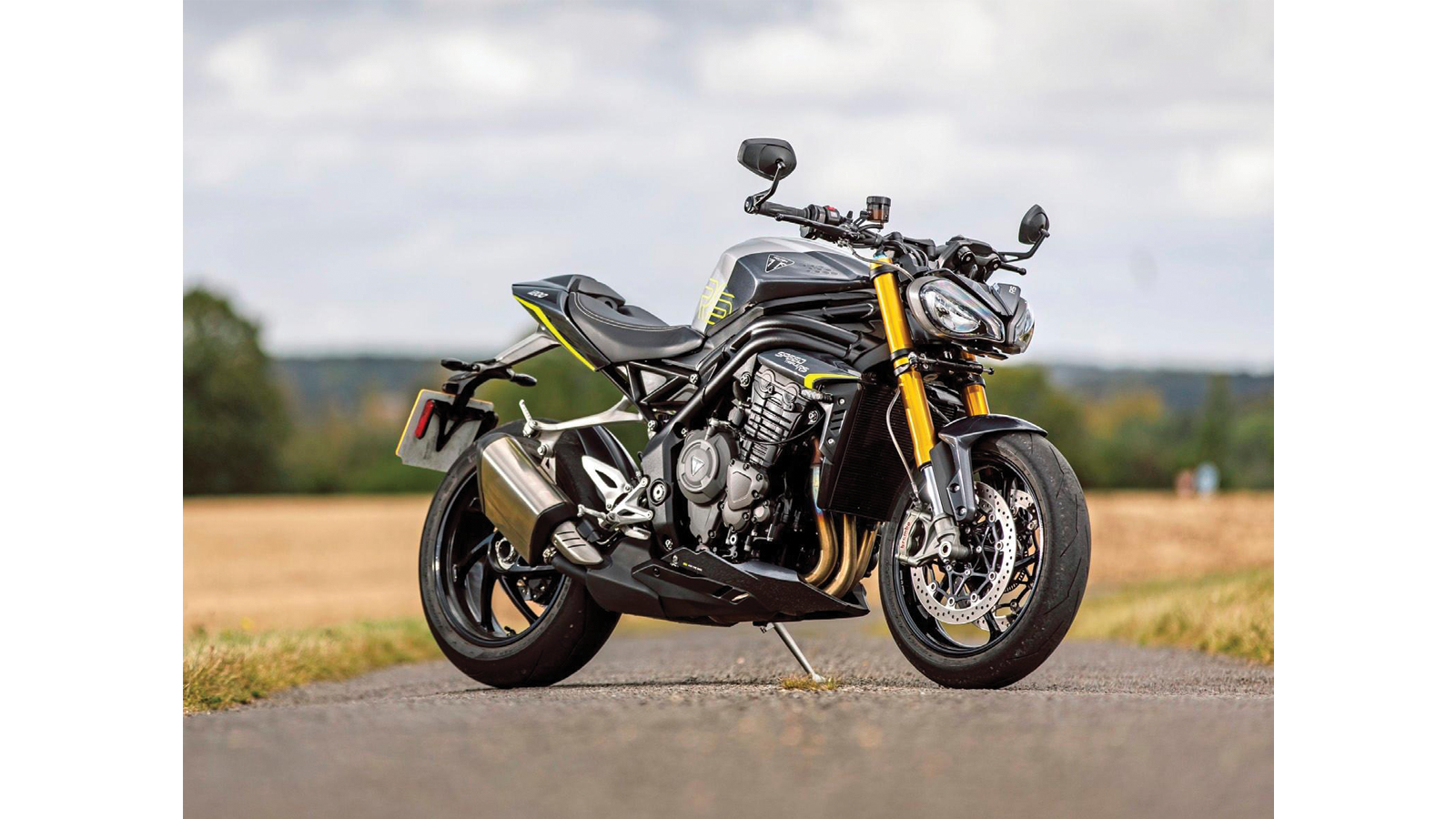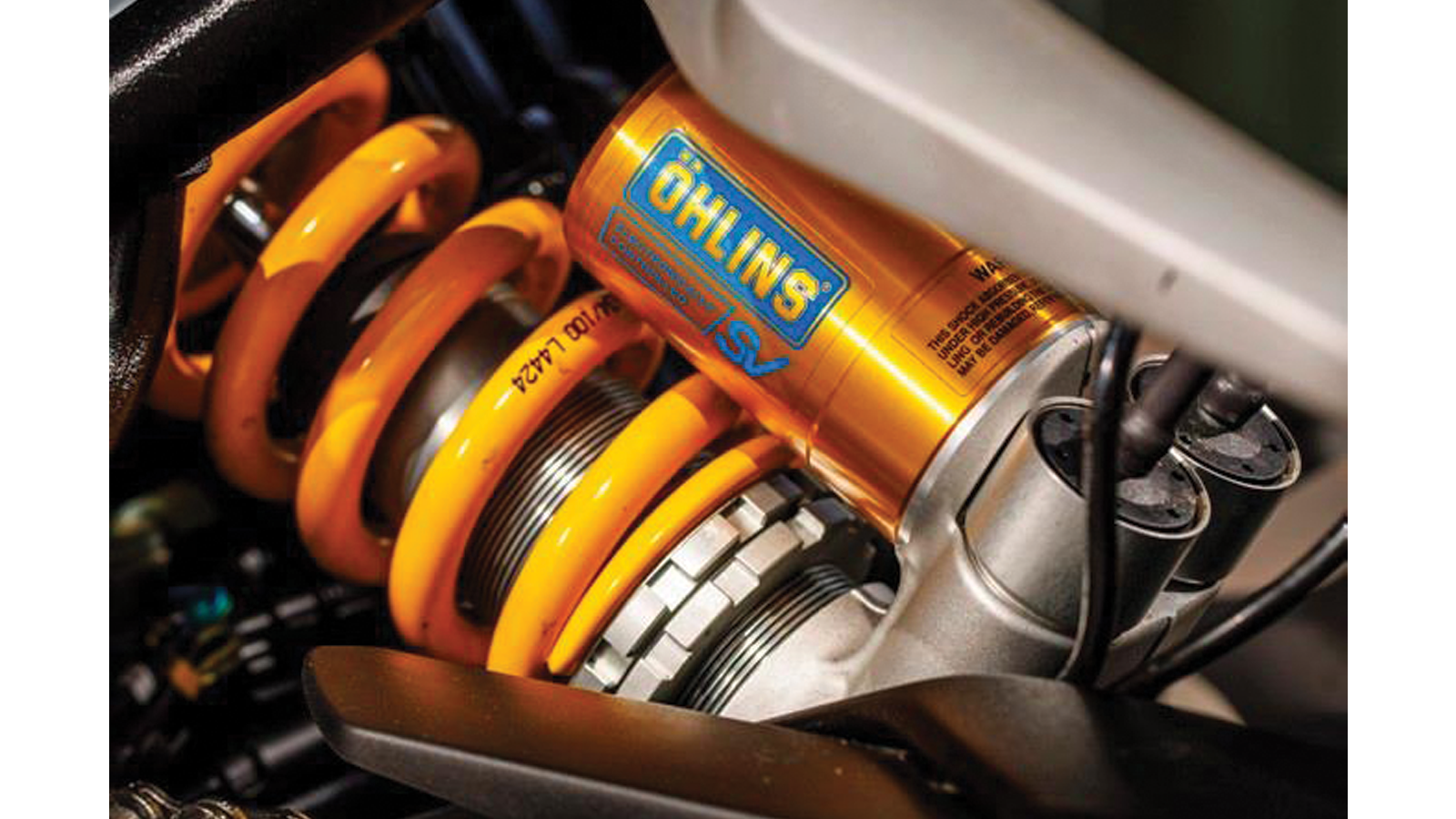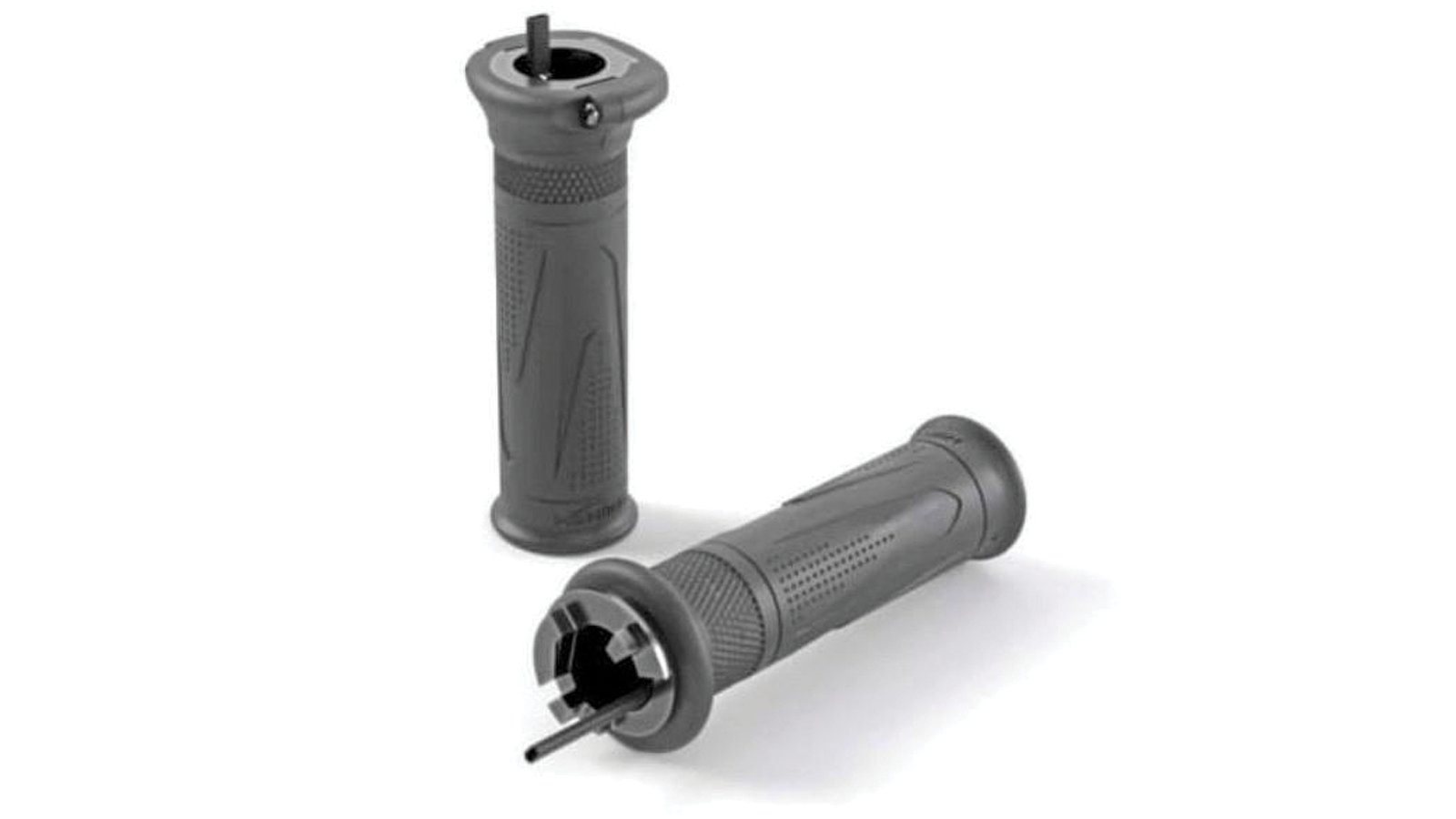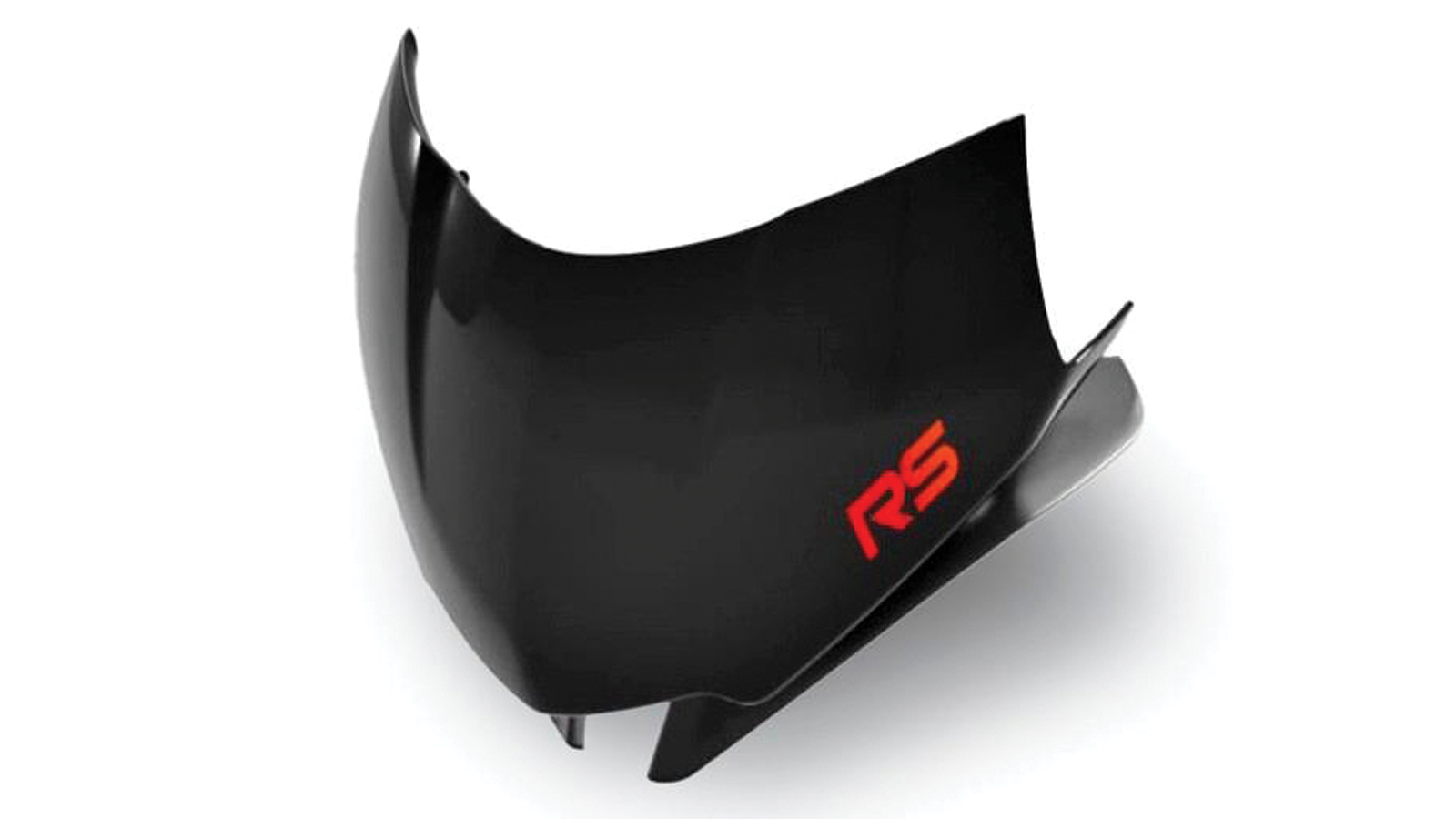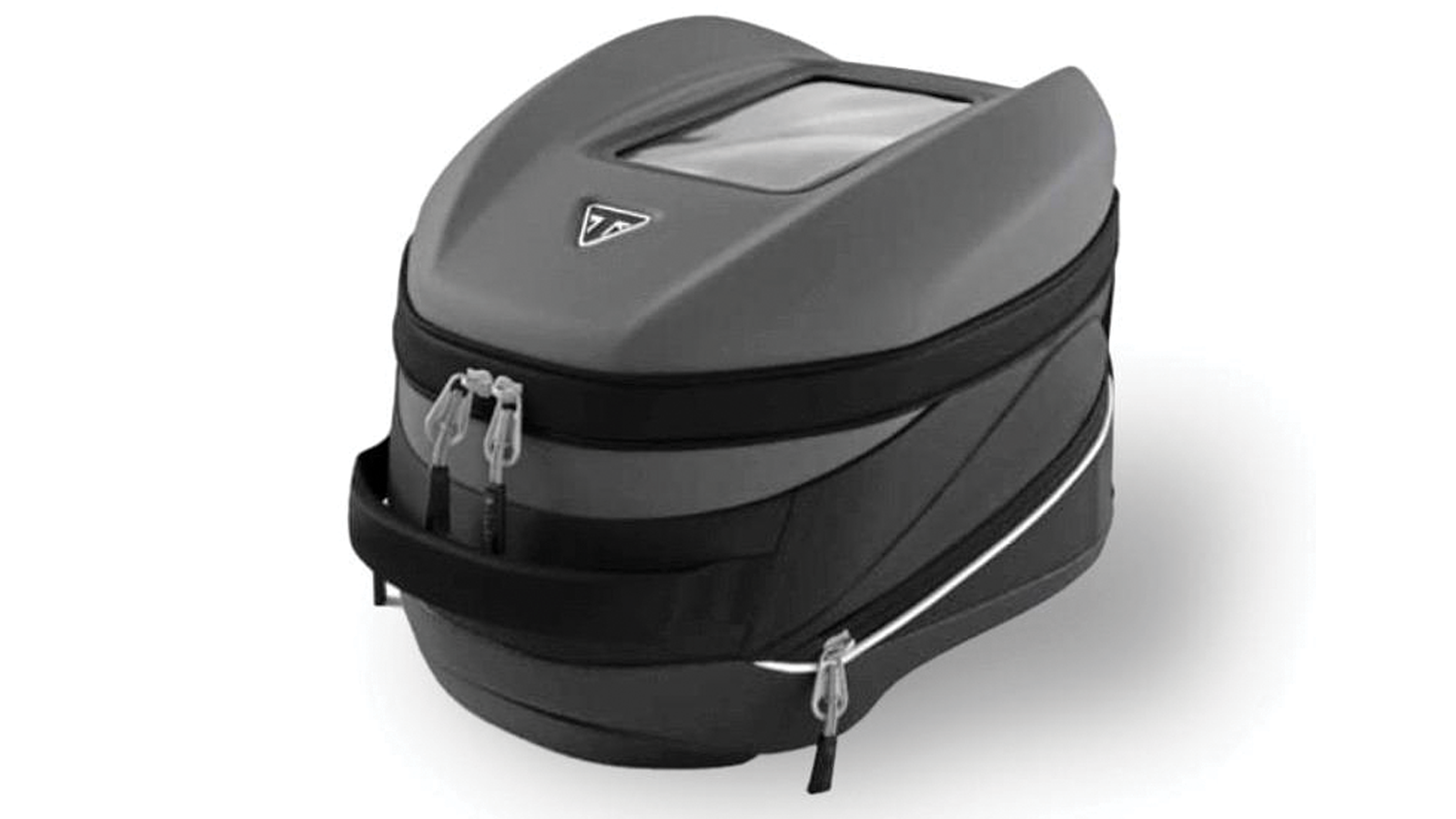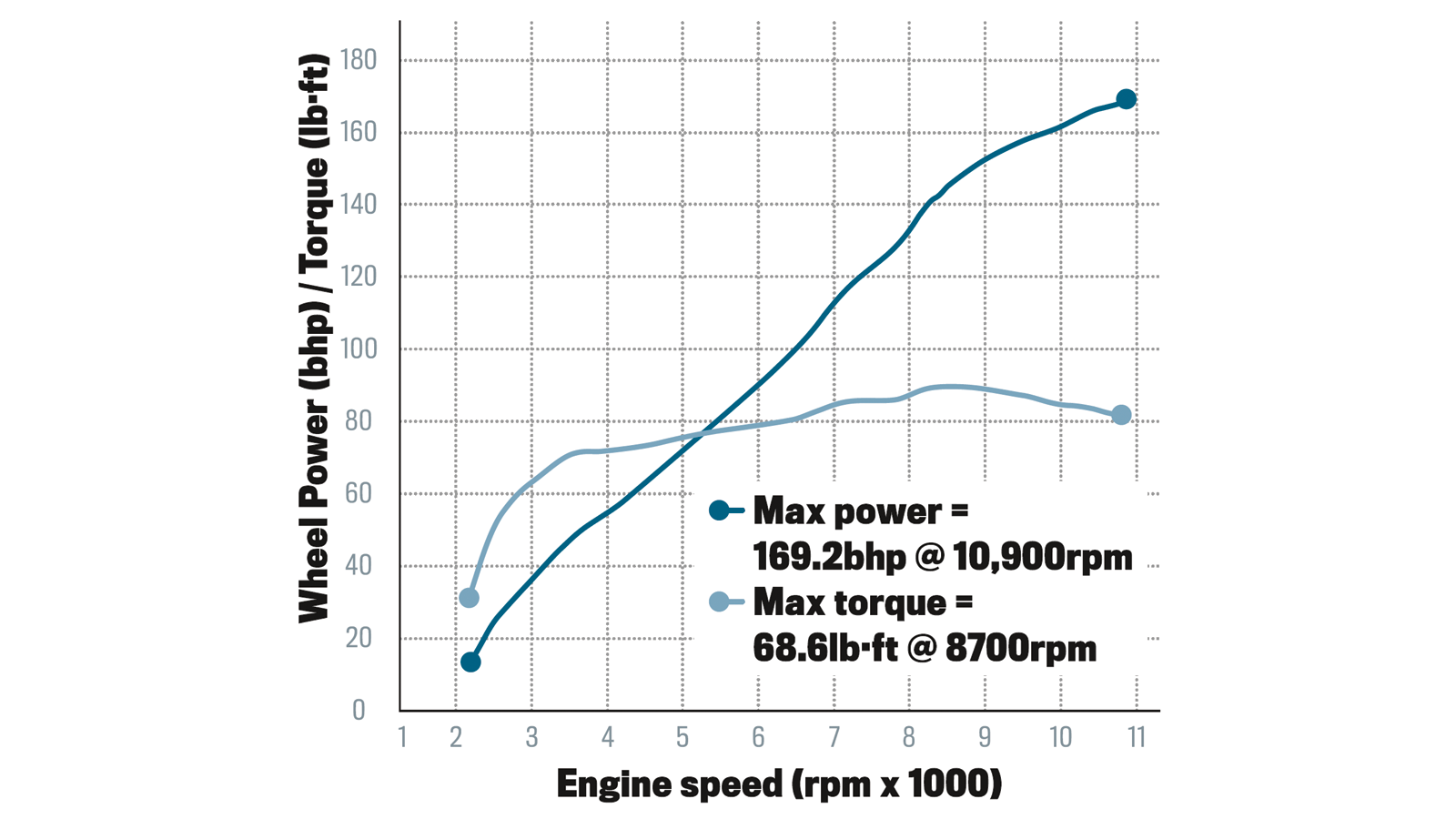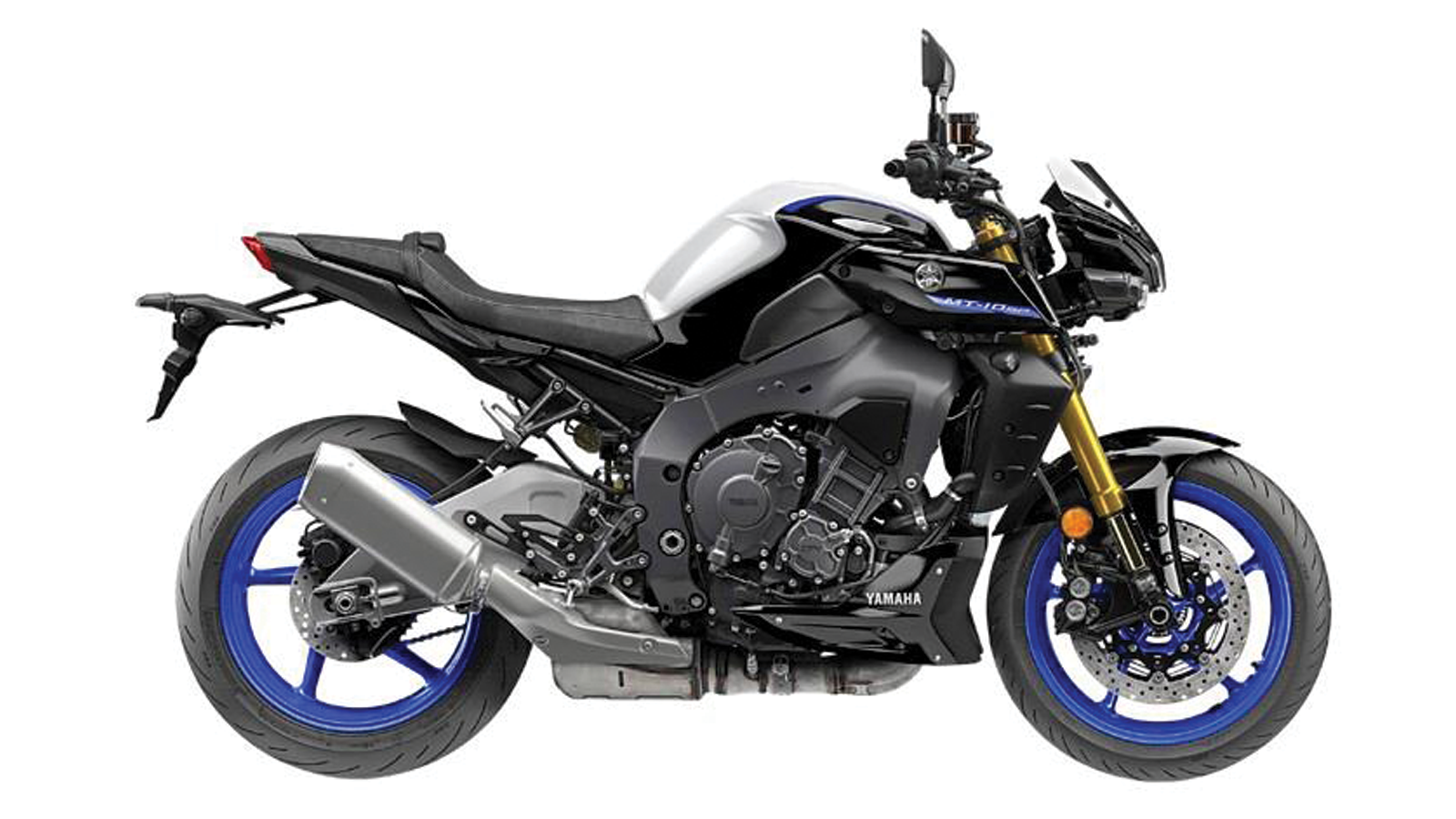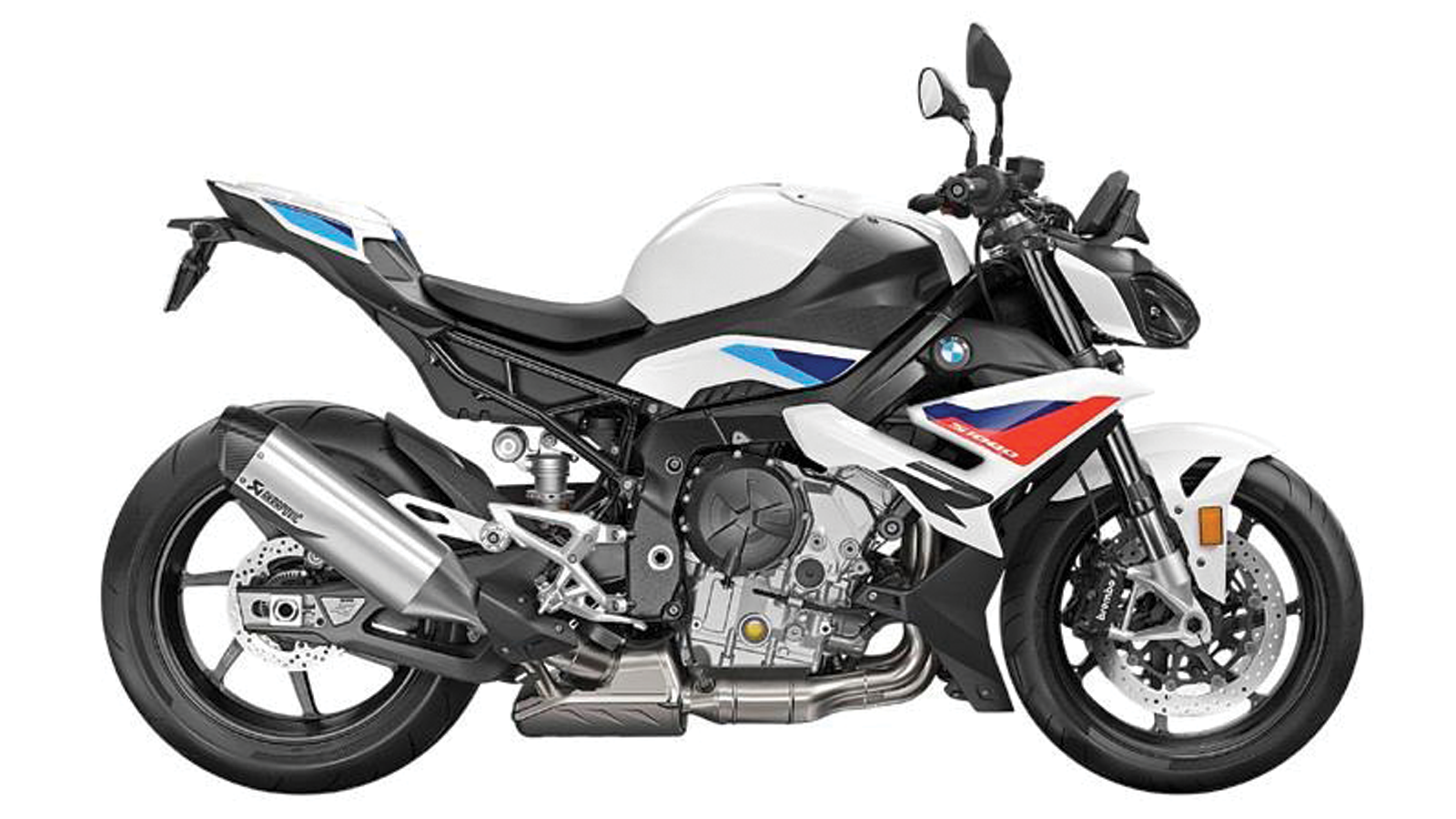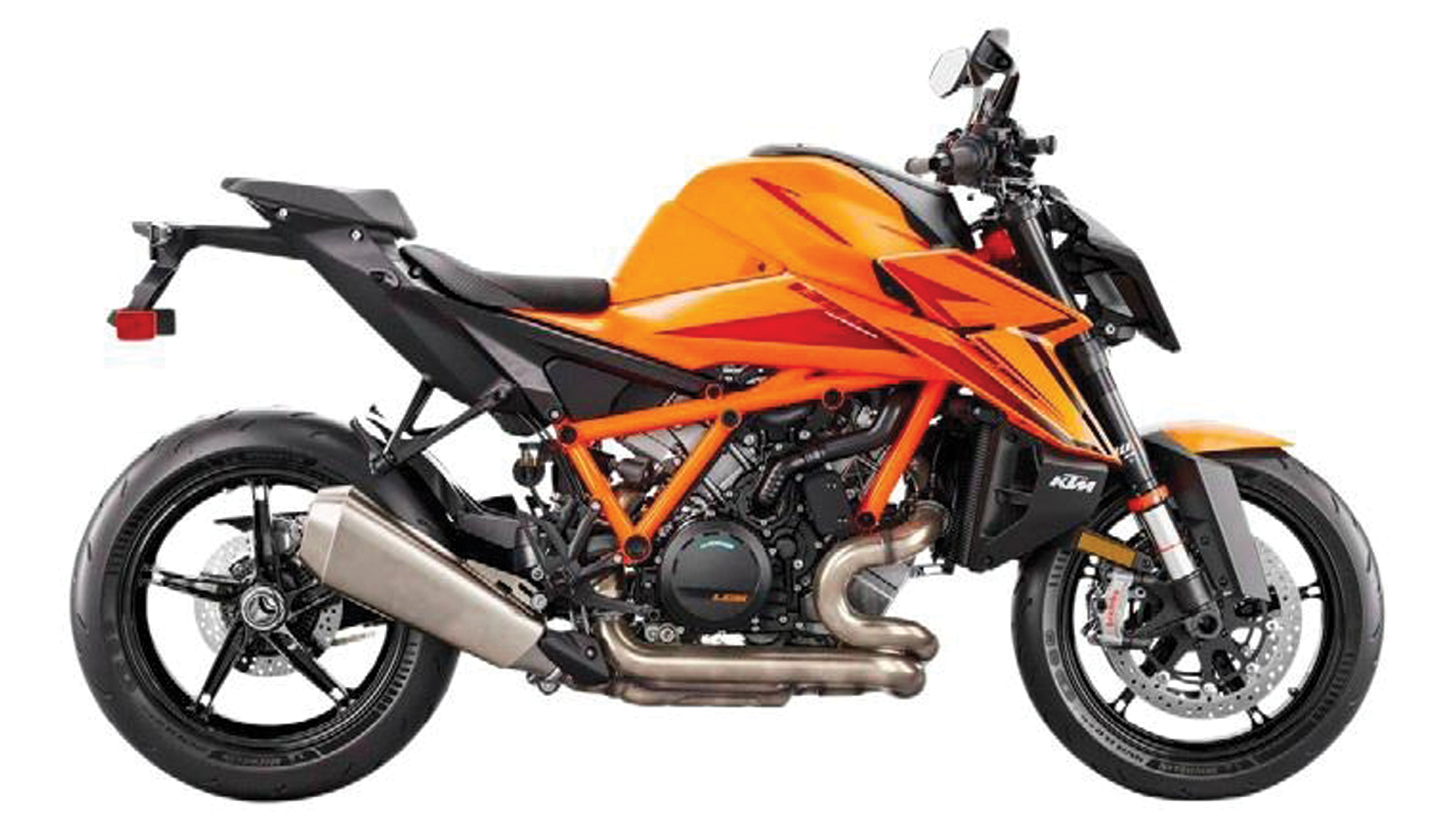Q: Is the latest Triumph Speed Triple the super-naked for proper road riders?
BIG QUESTIONS ANSWERED
It’s more powerful and cleverer than before, but does it really work better where we need it the most?
Words Simon Hargreaves Pictures Adam Shorrock
A recklessly fast British heavyweight with 30 years of bad behaviour. And the new Triumph
REMEMBER THE TRIUMPH advert with a black, muscular naked bike guarded by a Rottweiler, unsure whether to clamp its jaws around the front wheel or cock a leg on it? The original Speed Triple was launched 31 years ago, at the start of a model evolution that saw it pass through a streetfighter phase in the late ’90s into the super-naked class by the end of the 2000s.
But whatever Triumph marketing people said, truth is none of the iterations were off-the-leash intimidating. The Speed Trip doggedly possessed a user-friendly side beloved by all styles and genders of rider. More of a Labrador retriever kinda bike.
In 2021, the RS moved the Speed Triple into hyper-naked territory. However, its highperformance engine, suspension set-up and committed riding position made it less fun and forgiving on the road. What was once an all-round, big-bore
naked was too single-minded in pursuit of horsepower and lap times. We weren’t fans – it only really worked once you backed off the power and the suspension.
But Triumph updated the RS for 2025. It’s the most powerful, most advanced Triumph ever built – and when editor Matt rode it in a Speed Triple anniversary feature (RiDE, August), the signs were good. So, let’s see how it fares in biking’s most thorough road test.
RIDING POSITION
The 2021 bike’s low bars placed a lot of rider weight over the front end and always felt very committed, like you’re permanently waiting for the flag to drop. Pegs and seat position stay the same for 2025, but one-piece bars are 10mm wider and 7mm higher.
EQUIPMENT
Next-level electronic riding management and, now, electronic suspension set-up includes independently variable wheelie, engine braking and braking slide control, as well as existing cruise control and the usual Bluetooth integration. Heated grips aren’t standard, but Triumph’s latest quickshifter and keyless ignition are.
THE COSTS
The 2025 Speed Triple RS starts at £17,495 for the base bike in black, £1700 more than 2024 – thanks in part to the added cost of semi-active Öhlins and associated software, and new steering damper. Red/Granite or Yellow/Granite add £400, heated grips are £220, and a fly screen and visor add-on are £152 and £112, respectively.
SUSPENSION
Out goes 2021’s stiff Öhlins set-up, and in come their latest Smart EC3 semi-active springs with electronic set-up options for fine-tuning, or the option to disengage the semi-active bit and have them act as conventional forks and shock, but still fully adjustable and customisable per riding mode. Also new is an adjustable Marzocchi steering damper.
WHEELS, TYRES AND BRAKES
No messing with the sporting intent of Brembo Stylema four-pot calipers on 320mm discs, with their Multiple Click System span lever and three-way ratio adjustment. Tyres switch from Metzeler Racetec RRs to the equally trackflavoured Pirelli Diablo Supercorsa SPs.
ENGINE
The 1160cc, 12v, 120° inline triple has been lightly modified to meet Euro5+, with a freerflowing exhaust, plus intake and fuelling mods hence the new dual-exit wheelie-bin… sorry, ‘end can’). Also a rebalanced crank for smoother low-down running and fewer vibes. Power is up a claimed 3bhp to 181bhp at 10,750rpm and torque up 2lb·ft to 94lb·ft.
Q: Is it more fun or more fearsome?
It’s fun on British B-roads without being too crazy…
Definitely more fun – the 2025 Speed Triple is delightfully rapid without being crazily rabid (unlike some other hyper-nakeds). While the engine refinements are subtle and you’d need to zoom in on the dyno graph to spot the extra power and torque, the greater difference is the way the motor’s performance blends with the rider’s inputs. It’s smoother, throttle control more balanced, and power delivery more rounded than ever.
Even the vibes – a patch of tingles when you bat the throttle open from 3000rpm in top – are more like a massage chair than mechanical grumbling.
But it hasn’t gone soft. Flick down the Triumph’s exemplary quickshifter and dip into the Speed Triple’s midrange, and all the old guff about a triple being a great compromise between a twin and a four makes sense. It’s magnificent to gun it, mid-shifting between 5000rpm and 6000rpm in a series of staccato raps. You want to go use the engine again and again because it’s so wellengineered – for fun.
Q: Is the riding position better?
Riding position is perfect for getting stuck in
Very much so. Like the engine changes, it’s a subtle shift on paper – the pegs and seat are in the same positions as before (seat vinyl finish is upgraded from a dimpled effect that looked like a shower mat to a smoother, more premium look). But the bars are 10mm wider and 7mm higher than the old bike.
Sounds like nothing, and cynics (who, me?) may dare suggest the only reason Triumph raised the bars is to gain a few extra millimetres of clearance for plumbing the cables at the top of the longer, semi-active Öhlins forks.
But let’s pretend it was for our benefit – and it makes a difference, reducing load on the wrists and the tendency to lock arms, instead suiting a gentle bend in the elbows and generally making the Triumph’s top half a more civilised, less aggressive place to be, either in town or on the motorway. It’s now a perfectly poised, semi-sporty position, but not demanding at all.
Q: How good is the new suspension?
Third-gen Öhlins semi-active shock is very good
Stunning. Set up as standard, in Road mode, the ride quality is plush and composed. There’s no gritting teeth for crashes into ruts or ripped tarmac; just a genuinely glowing sense of control and calm.
If you want to tailor the settings, the scope of adjustment from the dash is extreme with 10 steps across seven parameters. You can feel the difference, too.
Or, you can switch semi-active off and run the springs as passive suspension with 23 ‘clicks’ per setting (and it’s still brilliant). Or, you can ignore all that and use supplied Rider mode settings with the set-up Triumph and Öhlins think works best.
Q: Has it got too much technology?
Simple and clear, but minor annoyances
No, because it doesn’t get in the way of riding enjoyment. The only possible source of complaint is that traction control and wheelie control, although both independently adjustable, are both either on or off. So you can’t have traction control still active while happily hoisting third gear monsters – hardly an imposition for most of us.
In the meantime, in Sports mode the Triumph will skim its front wheel 6in above the tarmac when you button it on corner exits, letting the front wheel countersteer then flick straight when it meets the road again – stability guaranteed with a new, adjustable Marzocchi steering damper.
Four riding modes – Sport, Road, Rain and Track – cater for most scenarios, with each customisable for traction, ABS, throttle map, suspension mode, engine braking and wheelie control. Two custom modes – one road and one track – allow further individual set-up.
All this is controlled via Triumph’s usual mini-joystick and dash interface, which is intuitive and easy to navigate. Cruise control is a welcome addition, but it’s still annoying to not have a trip reading and remaining range on the dash at the same time.
“‘The tech doesn’t get in the way of riding enjoyment’”
Lots of fun factor despite all the gizmos
Q: How much does it actually weigh?
On our scales fully fuelled, the RS has a 51/49 front/rear weight distribution and weighs 203.5kg, 4.5kg up on Triumph’s kerb claim.
Q: How well made is the Speed Triple?
Looks striking, but Simon’s not sure about that end can…
Engine
Modern Triumphs have an excellent reliability record overall, and the 1160cc motor – launched five years ago, and with a similar T-plane unit to the Tiger 1200 – has done nothing to blemish it with no mechanical recalls issued. And with a 10,000-mile service interval and 20,000 for valve clearances, all you have to do is keep it topped up with oil.Finish and details
New touches include a black finish on the milled handlebar clamp and top yoke to unify the cockpit view, while details like sculpted Brembo brake and clutch levers, aluminium numberplate hanger and arched alloy pillion footrest hangers remain. But the front mudguard has switched to plastic from carbon fibre on the old RS.Looks
Most of the looks – italic headlights, bolted aluminium subframe (now black, not silver), waisted seat unit – remain. But we have to talk about that end can. Still a single-sided twin exit, the design is shorter but deeper – Triumph say it centralises mass, which it will do to marginal effect, but the real reason must be related to Euro5+ approval.
Q: What are the best options and add-ons
Triumph heated grips £220
Triumph’s own-brand heated grips have integrated controls and wire through the bars for a sleek look. They work well and are a good resale feature.
Triumph fly screen £152
Handy for taking the edge off headwinds. Textured black infill complement the colour-coded screen with no visible fixings. Optional visor (pictured) is £112 extra.
Triumph 10-litre tankbag, £215
A bespoke product for the Speed Triple, is waterproof, quick-release and should reduce windblast. Can be combined with matching tailpack.
Q: What will it cost to run?
Q: How easy is it to work on?
The Speed Triple comes with a seat cowl, but a pillion pad is optional. Both are removed using a Torx key, located on the inside of the coolant expansion tank cover (there’s also an Allen key, for emergency access to the keyless filler cap in the event of it not opening). The unadjustable rider’s seat is bolted down with two Allen bolts.
The battery lives under the seat, but because the positive terminal is obscured by the fuel tank flange, an electrical bus runs across the battery to allow easy access – a nice touch. The 12V socket on the right side of the bike, just above the clutch basket, can be used to reverse-charge the battery.
Its naked nature means home servicing is quick and easy; most will go to dealers for the next decade, though.
You might be able to store a chopped Pepperami under here
Q: What power does it make?
The 2025 Speed Triple makes 169bhp at 10,900rpm against a claimed 181bhp at 10,750rpm. A fair chunk to lose, especially as other Triumphs tested recently have been close to their claimed figures.
Torque is the same; we measured 90lb·ft at 8700rpm against Triumph’s claimed 94lb·ft at 8750rpm.
But when we plotted the curve over last year’s Speed Triple tested on the same dyno, they were almost identical, suggesting this isn’t an anomaly. And it’s certainly a great-looking pair of curves – linear, no bumps or dips, just a steady ramping up of performance.
Q: What’s it like to ride as a pillion?
RiDE veteran Caroline Barrett finds out how the RS fares two-up
Not much to hold on to, but there is a smile on Caz’s chops
My most recent pillion ride was on the back of my partner’s Yamaha MT-10, and I’ve been on the back of plenty of sportsbikes.
The MT-10 has somewhere to hook my fingers, but there’s nothing like that on the Triumph. I reached down to see if I could grab onto anything or wedge my fingers anywhere, but there’s nothing, not even an indent.
Obviously I knew the seat was going to be high, but when I first went to put my foot up on the pillion peg, I was nowhere near it. I’m 5ft 5ins, so I had to hitch my trousers up a bit more to get some lift. But after a few times I got used to it and it wasn’t too high to push up and get on.
It’s a sliver of a pillion seat – for a short ride or a Sunday blat and some fun on the back of a bike, it’s fine, I wouldn’t say it was uncomfortable. But there’s no cushioning – basically sitting on a hard bit of plastic. For any length of time, I don’t think it’d be any good – but obviously it’s not built for that.
I thought my knees were gonna be up under my ears, but actually there’s a decent amount of legroom and when holding on to the rider I could wedge my forearms on my knees for extra support, so I had something to lock into. My view was the back of the rider’s head, but that was okay because I was tucked in behind. Sometimes on sportsbikes you sit so high up you feel a bit up in the air and precarious. Also, there was no buffeting – I could just feel the wind on my arms.
The motor was vibey at low revs, but not harsh. It’s a really deep vibration – it goes through everything and I could feel it in my ears. As soon as the rider changes up, it disappears and the engine is smooth after that. And the quickshifter is good. I could feel the bike changing gear, so there’s a motion to it – but I was gently nodding, not bashing the rider in the back of the head. Nice and smooth.
I’d get on a Speed Triple again – it would be quite enjoyable on a nice Sunday afternoon ride. It’s much better than I thought it was going to be.
THE FACTS
Triumph Speed Triple 1200 RS
Engine 1160cc DOHC inline triple, 4v per cyl, l/c
Power 181bhp @ 10,750rpm (claimed) 169bhp @ 10,900rpm (tested)
Torque 94lb.ft @ 8750rpm (claimed) 69lb·ft @ 8700rpm (measured)
Transmission Six-speed chain
Frame Aluminium twin spar
Front suspension 43mm USD semi-active/passive forks, manually adjustable preload
Rear suspension Monoshock, semi-active/passive, manually adjustable preload
Front brakes 2 x 320mm discs, four-piston calipers
Rear brake 220mm disc, two-piston caliper
Front tyre 120/70 ZR17
Rear tyre 190/55 ZR17
Wheelbase 1445mm
Rake/trail 23.9°/104.7mm
Fuel capacity 15.5 litres
Seat height 830mm
Weight 199kg (kerb, claimed) 203.5kg (kerb, measured)
Rider aids multiple riding modes, semi-active/passive suspension set-up, traction control, wheelie control, engine braking control, cornering ABS, cruise control, up/down quickshifter, Bluetooth multimedia integration
Q: What are its rivals?
Yamaha MT-10 SP £16,620
> 164bhp > 83lb·ft > 214kg (kerb)
Similar outright engine performance and deep dive electronics as the Speed Triple, and same delicious semi-active Öhlins set-up – but the MT’s crossplane inline four delivers a punchy, zappy, completely loopy riding experience, as if it’s the Speed Triple’s crazy younger brother.
BMW S1000R £16,215
> 168bhp > 84lb·ft > 199kg (kerb)
If you spec the BMW to close to the Speed Triple’s level – adding the Comfort Pack (keyless, cruise, heated grips) and Dynamic Pack (quickshifter, full engine modes, semi-active suspension) – it comes out close to the Speed Trip. Not quite as much charisma.
KTM 1390 Super Duke R £15,299
> 187bhp > 107lb·ft > 214kg (kerb)
Not the beast KTM’s marketing pretend it is, the 1390 Super Duke is actually a roomy, comfy hyper-naked – obviously, with a bonkers side if you crank it. No semi-active option, but a full suite of electronics otherwise. Not as pretty as the Triumph.
A: It’s our favourite for the road, but hasn’t gone soft
A glorious celebration of Brit engineering – and a decent road machine as well
On paper the 2025 Speed Triple RS isn’t a big leap forward from its predecessor, but the changes – basically the addition of super-plush semi-active suspension and a slightly less committed riding position – bring a disproportionate improvement to the on-road riding experience. (They also make it £1700 more expensive than it was previously, which may come as a shock if you were thinking of buying an RS last year and only got round to it this year.)
The Öhlins semi-active is adept at buttering up bumps and papering over cracks in our crumbling road network, and higher bars do just enough to prop up ageing wrists and necks for another few years of Sunday fun.
The overall feeling is the Speed Trip has gone from a bike designed and set up to cut hot lap times on smooth racetracks to the exclusion of all else, to now being properly refocused on having a blast on the road instead – and it’s all the better for it. But it’s also lost none of its ability to muck about in the fast group, if that’s your bag – the engine is still a marvellous, howling, churning bucket of hot whizz with a unique Hinckley triple flavour you can’t stop thinking about long after you’ve put the bike in the garage.
And the chassis dynamic is still blissfully direct, diving with glorious stability and confidence into turns with a single-minded sense of purpose.
It’s stirring stuff, and while the engine configurations of other manufacturers all have their moments, not many keep you wanting to come back for more as consistently as the Speed Triple RS.
NEXT MONTH... Is the Yamaha Tracer 7 GT now the class-topping middleweight tourer?

